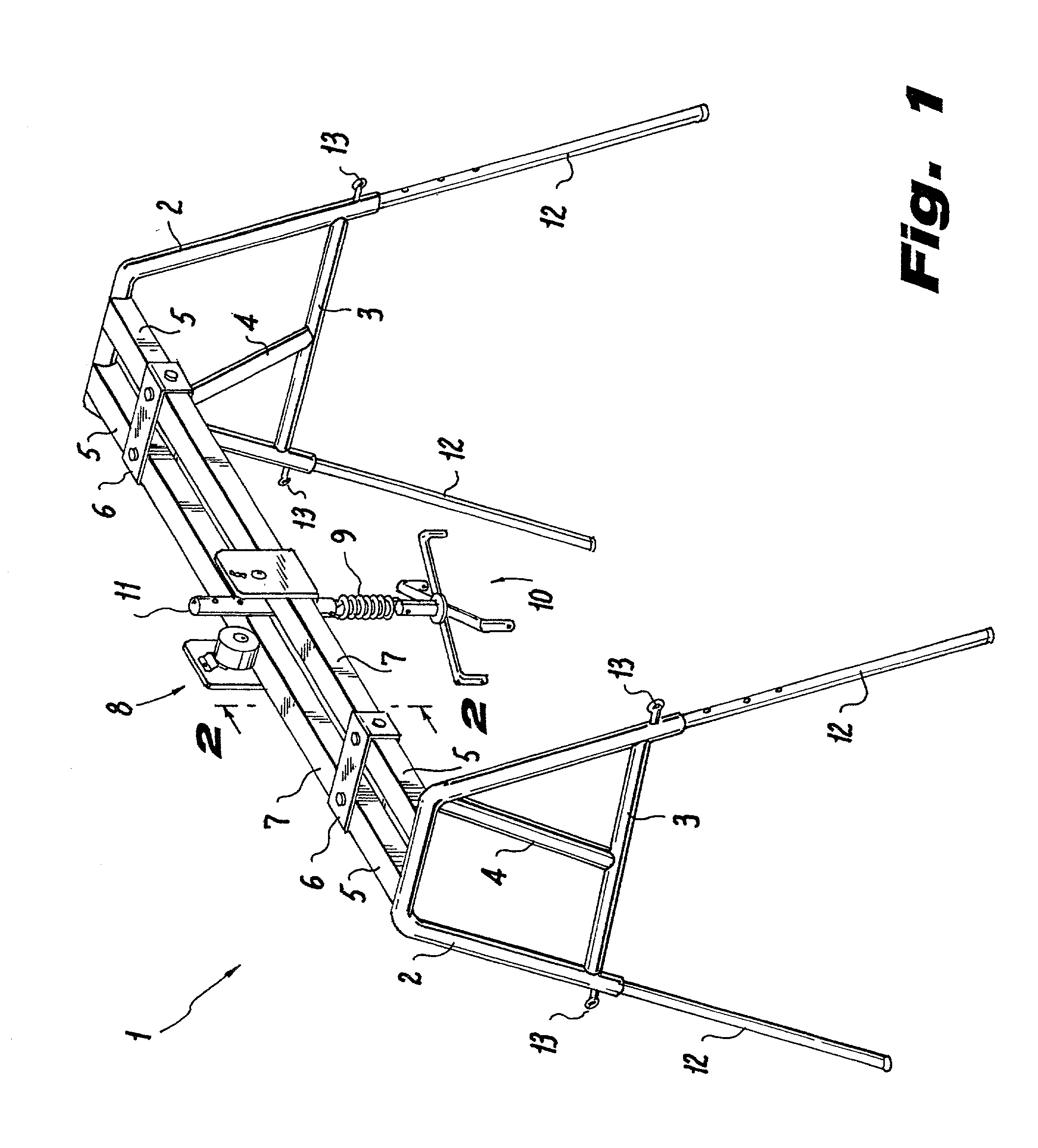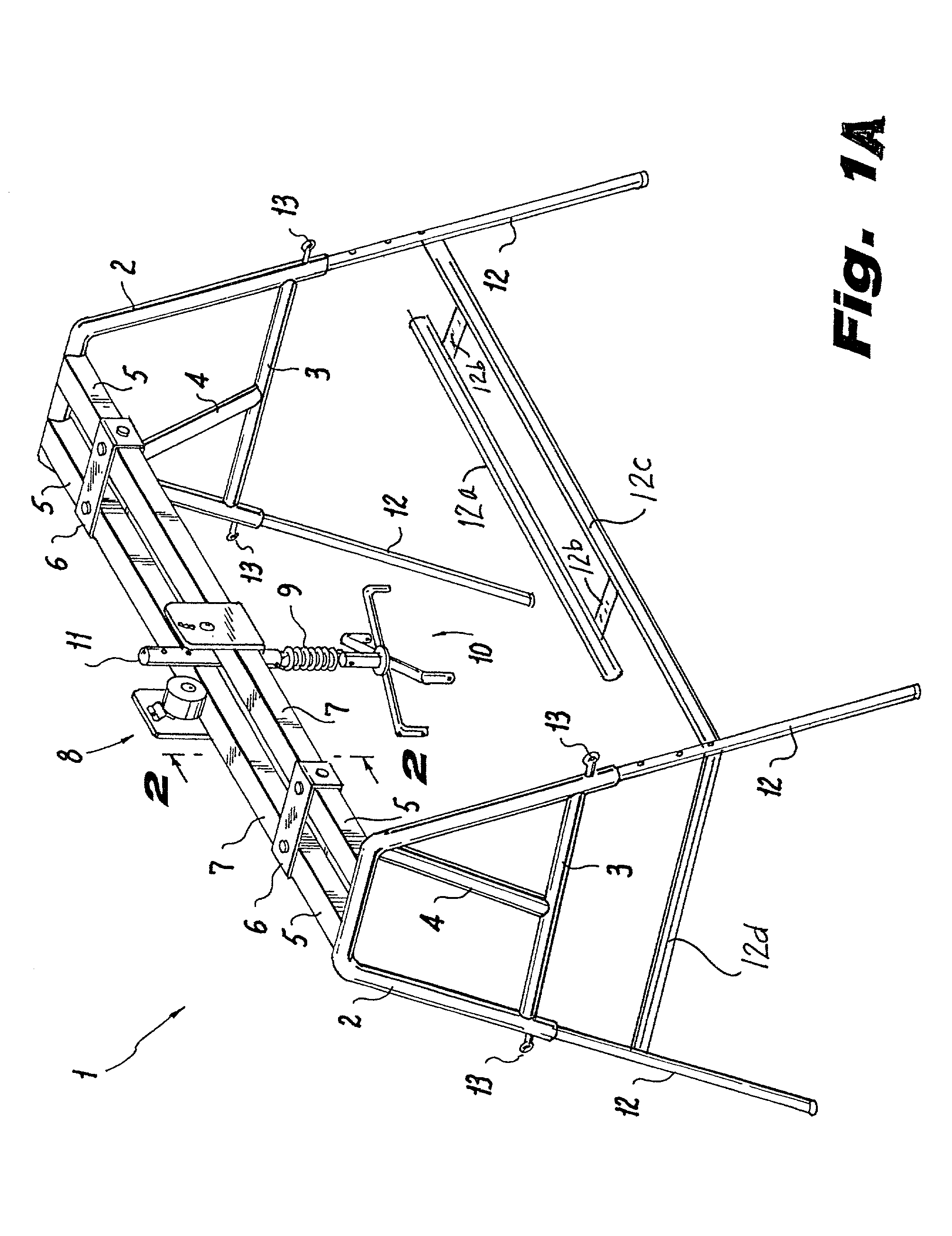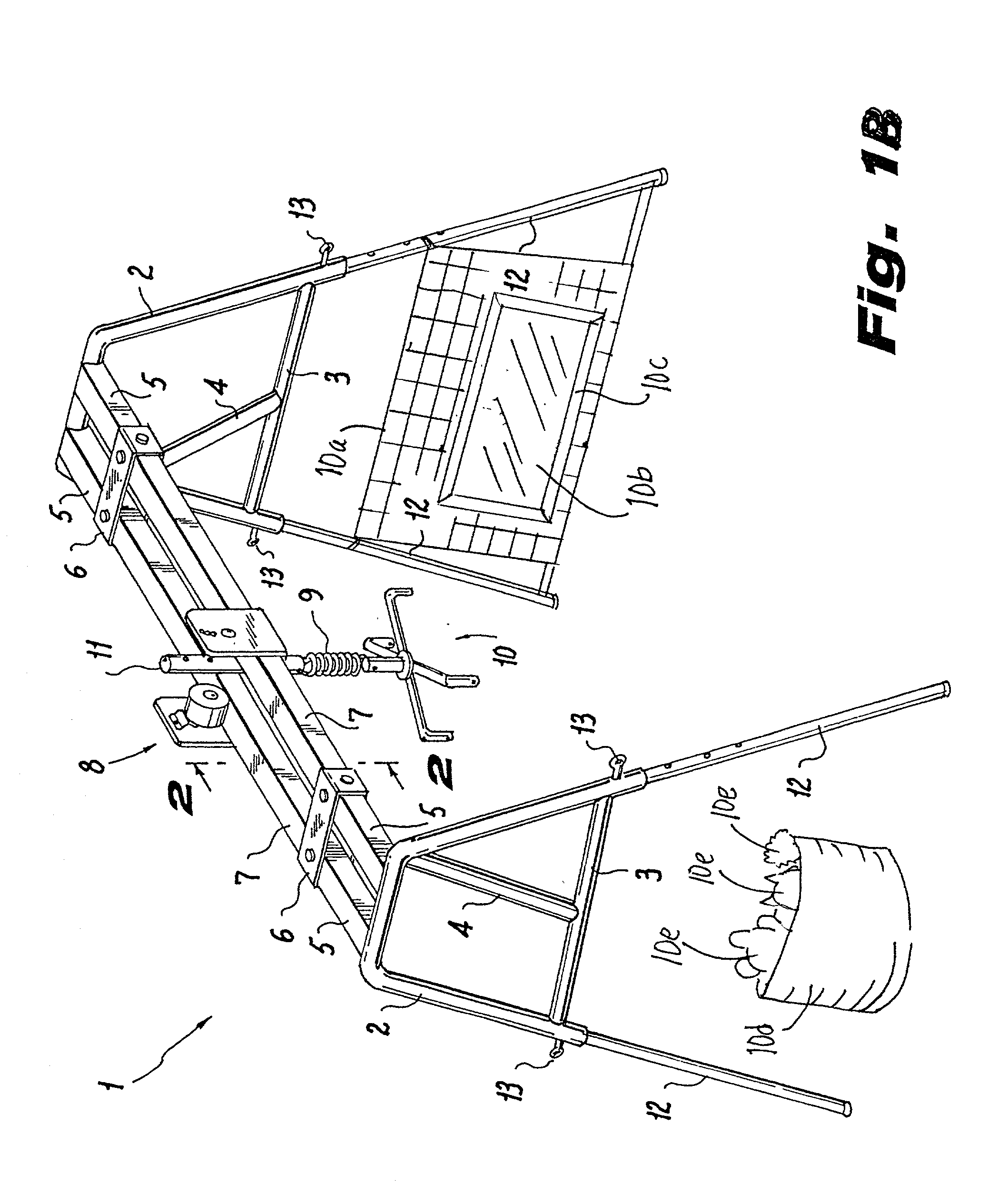Method and apparatus to exercise developmentally delayed, physically and/or neurologically impaired persons
a technology for developing disabled children and physical and/or neurologically impaired persons, applied in non-surgical orthopedic devices, walking aids, physical therapy, etc., can solve the problems of restricting the transition into alternative postures, restricting the promotion of weight bearing activities, and restricting the transition to alternative postures. , to achieve the effect of gaining the strength necessary
- Summary
- Abstract
- Description
- Claims
- Application Information
AI Technical Summary
Benefits of technology
Problems solved by technology
Method used
Image
Examples
embodiment 401
[0150] FIG. 16 shows a wall-mounted support frame embodiment 401 of the present invention having a support trolley 408 having a pair of rails 407 similar to the structures shown in FIGS. 12 and 13. In FIG. 16 support trolley 408 rolls along rails 407 by means of trolley wheels 406. Support trolley 408 is in turn attached to downwardly extending support extension 409 by height adjustment collar 421 with height adjustment pin 422 fixing support trolley 408 in position relative to support extension 409. A pair of stop plates 426 at either end of rails 407 serve to arrest the motion of support trolley 408 at the respective ends of its travel and stop plates 426 also serve as wall mounting brackets. Rail braces 486 maintain rails 407 in spaced apart position relative to each other.
[0151] Frame hanger 410 extends outwardly from its attachment at the bottom of support extension 409. Frame hanger 410 has a plurality strap restraints 412 downwardly extending therefrom, which strap restraints...
embodiment 501
[0152] FIG. 17 shows a ceiling-mounted support frame embodiment 501 of the present invention having a support trolley 508 having a pair of rails 507 similar to the structures shown in FIGS. 12 and 13. In FIG. 17 support trolley 508 rolls along rails 507 by means of trolley wheels 506 [not shown]. Support trolley 508 is in turn attached to downwardly extending support extension 509 by height adjustment collar 521 with height adjustment pin 522 fixing support trolley 508 in position relative to support extension 509. A pair of stop plates 526 at either end of rails 507 serve to arrest the motion of support trolley 508 at the respective ends of its travel and stop plates 526 also serve as ceiling mounting brackets. Rail braces 586 maintain rails 507 in spaced apart position relative to each other.
[0153] Frame hanger 510 is shown as a disk but may be a frame as shown in FIG. 16. As shown in FIG. 17, disk hanger 510 extends outwardly from its attachment at the bottom of support extension...
embodiment 801
[0156] FIG. 20 shows hand-held frame support embodiment 801 having a graspable bar supporting a pair of hand-held strap loop handles 872 from which a plurality of straps 871 extend downwardly therefrom. Straps 871 in turn attach to strap restraints 812 on body suit 860, so as to position a child 870 with desirable support for therapy. At least one strap restrain 812 on body suit 860 is attached in the area of the hips of child 870 so as to position a child 770 with desirable support for crawling and creeping.
[0157] FIG. 21 shows a kit 900 for a support frame embodiment with convenient packaging including receptacle 903 for support frame members, as well as visually attractive target members, such as mirror 905 or activity net 929 to hold toys. Lit 900 also optionally includes disk hanger 910, straps 971, body suit 960 or toy box 927. Mirror 905 is preferably a safety mirror with soft edges can be placed beyond one set of legs of a frame, such as legs 12 of frame 1 shown in FIG. 1, t...
PUM
 Login to View More
Login to View More Abstract
Description
Claims
Application Information
 Login to View More
Login to View More - R&D
- Intellectual Property
- Life Sciences
- Materials
- Tech Scout
- Unparalleled Data Quality
- Higher Quality Content
- 60% Fewer Hallucinations
Browse by: Latest US Patents, China's latest patents, Technical Efficacy Thesaurus, Application Domain, Technology Topic, Popular Technical Reports.
© 2025 PatSnap. All rights reserved.Legal|Privacy policy|Modern Slavery Act Transparency Statement|Sitemap|About US| Contact US: help@patsnap.com



